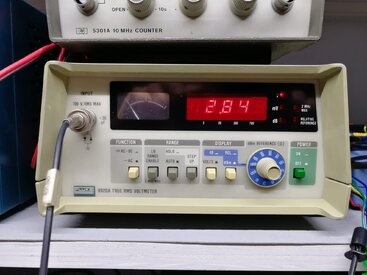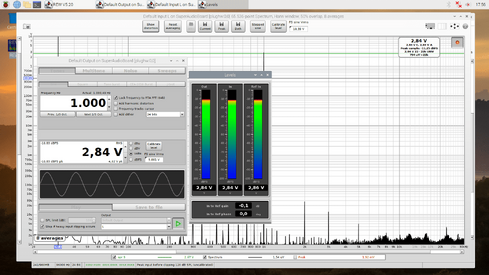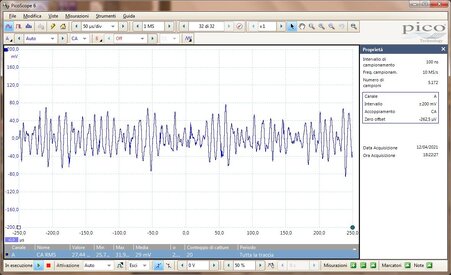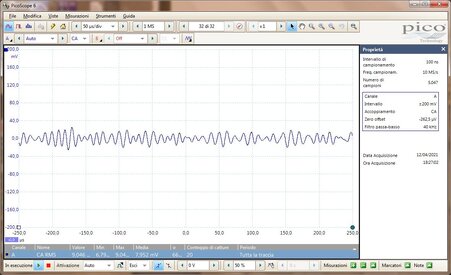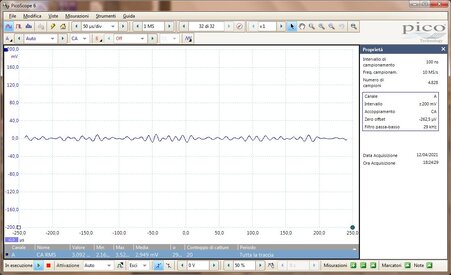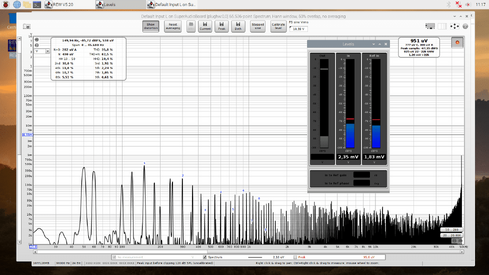I did further tests to check the noise level measured by the system. I confirm that the lower level measured by REW compared to the Fluke 8920 and the Picoscope are due to the bandwidth that with the sound card is limited to less than 48Khz while for measuring instruments they do not have this limit.
I set the Picoscope oscilloscope's input filter to 40Khz and actually the noise drops to about 8mV, even higher than that indicated by the REW level meter.
But not happy, I measured the actual cutoff frequency of the oscilloscope and I found a frequency of 55Khz, so I verified that the actual Cutoff frequency at 40Khz corresponded to the picoscope setting at 29Khz.
I took the measurements again and this time the noise level of the picoscope decreased to 2.9mV very close to the noise measured by REW.
I confirm that the REW noise measurement is in line with that measured by Fluke and Picoscope taking into account the audio band limit to comply with the Nyquist sampling theorem.
Unfortunately, I trusted the accuracy of the Picoscope filter and instead the wrong cutoff frequency distorted the measurement.
Sorry if I bored you and thanks for your attention
Greetings
Antonio








